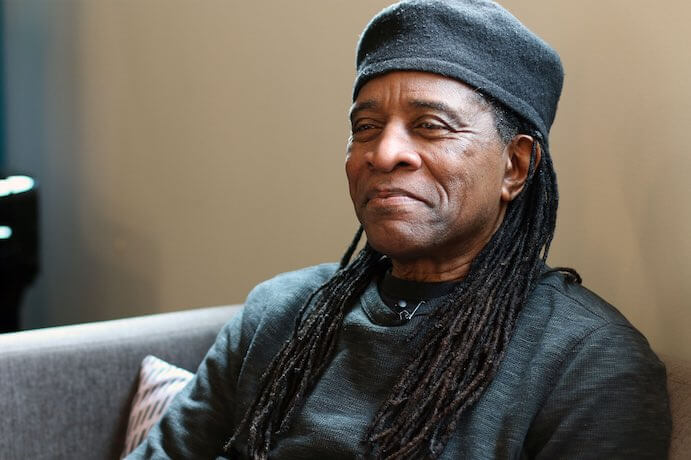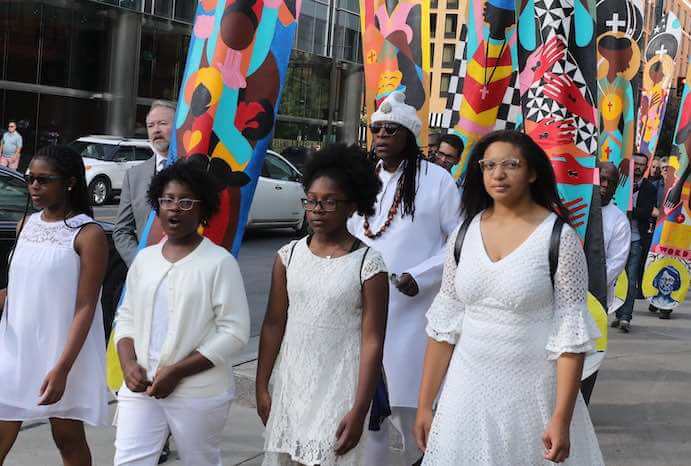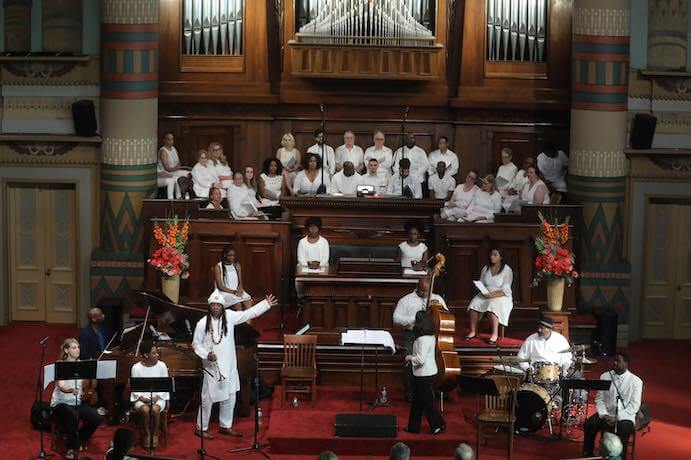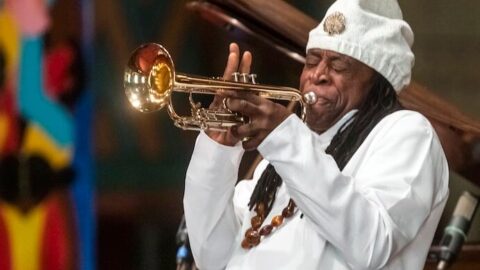Martyrdom–a word that conjures up images of early Christians being ravaged by hungry lions in the arenas of Rome, stripped of their humanity, and killed for their faith. Sadly, this sort of violence is not a distant memory. From the Middle East to Montgomery, sacred spaces are not immune to hatred and violence, and there is perhaps no clearer demonstration of this than the mass shooting of nine worshippers at Mother Emanuel African Methodist Episcopal Church in Charleston, South Carolina by a white supremacist wishing to ignite a race war. The massacre prompted a great outpouring of grief and, in recalling their lives, Christian leaders celebrated that–like the early martyrs of the church–these nine had earned their salvation. Many will remember President Barack Obama’s rousing eulogy for the Emanuel Nine in front of the AME clergy, leading them in a passionate rendition of “Amazing Grace”.
Yet, aside from the abiding hymns and familiar prayers, how does one remember the lives of victims of violence through music? How do we create a fitting memorial for those stripped of life, simply because of who they are? Do we weep and mourn, or celebrate and carry on? And just how do we give voice to those who are now voiceless? Classical composer and Jazz trumpeter Hannibal Lokumbe doesn’t claim to have the answers, but his powerful requiem, Crucifixion Resurrection: Nine Souls A-Traveling, is a most perfect solution.

Crucifixion Resurrection: Nine Souls A-Traveling was composed in 2017 for jazz ensemble, chorus, narrators, and vocal soloists, and was most recently performed by INTERSECTION Contemporary Music Ensemble, led by Kelly Corcoran, during the 2019 League of American Orchestras Conference in Nashville, TN. As a conference attendee, I joined a group of fellow classical music professionals in a silent march to the Downtown Presbyterian Church led by Lokumbe and others carrying iconographic banners by artist Steve Prince bearing the images of the departed souls whose names we would come to know during the performance: Rev. Sharonda Coleman Singleton, Daniel Simmons, Sr., Ethel Lee Lance, Rev. Clementa Carlos Pickney, Myra Thompson, Cynthia Graham Hurd, Rev. DePayne Middleton Doctor, Susie L. Jackson, and Tywanza Sanders.
It was somewhat surreal to march quietly and purposefully through downtown Nashville, holding up traffic at some intersections with crossing guards looking on with confusion, soulful country music emanating from the numerous bars and BBQ joints mixed with curious onlookers. As we ascended the steps to the sanctuary, I began to realize that more than just a clever means of keeping a couple hundred out-of-towners from getting lost, there was a true meditative quality to that long walk to the church. As we sat down in pews facing the musicians–vocalists, choir, jazz band, and narrators–I began to forget that I was there to attend a concert. Rather, as we filed into the surprisingly intimate space, distinctive for its stunning Egyptian Revival architecture, it felt as if we were friends joining together to recall the lives of old acquaintances in a sacred service for the dead, and to pray for peace.

Crucifixion Resurrection: Nine Souls A-Traveling opens with four teenage scribes who set the scene. As heavenly beings, they recount the story of lives lost and engage in dialogue with the departed, asking them what they would like to record into the book of ages. Each new saint responds in turn, beginning with Rev. Sharonda Coleman Singleton (ardently sung by soprano Koko Onwuzuruigbo in a delicate duet with violinist Annaliese Kowert). “Every Veil” is unique, allowing each saint to have their own voice, bringing to life the thoughts, dreams, regrets, and aspirations that reveal so much about the individuals they were.
In passionately declaimed prose punctuated by the wailing of Lokumbe’s trumpet, Saint Daniel Simmons Sr. says “Music would have saved that boy…I wanted so much to help that young man–all of us did. Never seen somebody so lost. I’ve been thinking about visiting him lately. Maybe now I could reach him–teach him a few hymns that would put some life into his lifeless eyes before they close forever….” His words then turn into an outpouring of affection and love for his wife and children. “I love you beyond your suffering–keep singing, praying and playing your instruments. You can’t imagine what joy it now brings my soul.” The testimonies continued in rapid succession, revealing universal themes of non-violence and forgiveness, and sadness, and joy. The innumerable emotions revealed in the testimonies of the Saints were complimented by the spontaneity of the music: recitative-like declamation, freely shifting into arioso passages with melodic interjections, sighs, more declamation, rousing choruses and virtuosic instrumental interludes, all seamlessly connected under Corcoran’s attentive and deft conducting.
Perhaps the most heartrending account came in the testimony given by the Rev. DePayne Middleton Doctor. Addressing her four children she says, “The young man who took your mother’s life is like much of the world–in so much pain; it took his pain and my crucifixion to feed the hunger of a world on the brink of starvation. There is no greater pain…than a life without love.” Yet, her testimony is not without regret.

The great Requiems of Mozart and Verdi may inspire awe, but Lokumbe’s drew real tears. There was no stern Dies Irae to call us to account, but rather, a loving mother encouraging her beloved children to know that “…when my grandchildren come from your womb–when you give them their first kiss, when you nurse them, bathe them, oil their skin, plait their hair, sing them a hymn, walk with them on their first day of school–know, my precious ones, know that I am rejoicing in your presence. Love all that you see and never forget that love is everything. I love you, Mom.” The testimonies end on a hopeful note, with Saint Tywanza Sanders in dialogue with the chorus “Whose land is it?/Who’s to say?; Whose sky is it?/Always changing; Whose gold is it?/Day to day; Whose book is it?/I don’t know, made me read it….” and calling for F-R-E-E-D-O-M. By the end, the audience had joined the ensemble, clapping and singing along. The work ends with a nod to the Ancestral Spirit, given special life by Cecil Brooks III’s outstanding drum solo, and an Affirmation and prayer, “No more dying–soon there will be no more crying. Come now river of life and peace–cleanse us of this pain and sorrow. Thank you for your love and grace.”
The smiles on the faces of the departing audience were genuine and uninhibited. In this emotionally charged, virtuosic, and yet, accessible work, Hannibal Lokumbe uses the story of the Charleston Nine to illuminate and inspire truths about the human condition. Crucifixion Resurrection: Nine Souls A-Traveling is not only a genre-defying musical delight, but it is contemporary sacred music at its most inspiring, and an extraordinary composition that inspires both artistic and humanistic sensibilities.
























